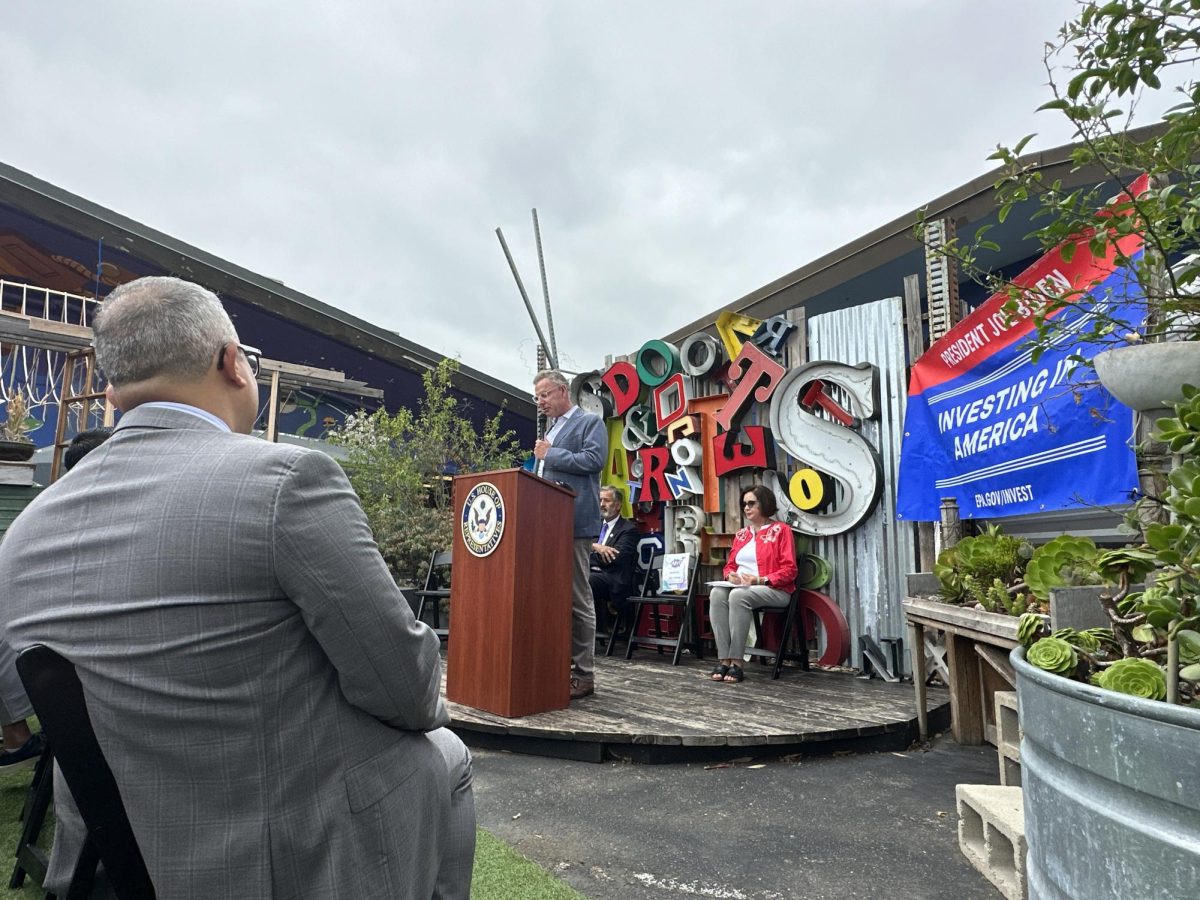Increased environmental support is coming to communities in the Environmental Protection Agency (EPA) Region 9, including California, Nevada, Arizona, Hawaii, Guam, American Samoa and the Northern Mariana Islands.
and around San Diego County, extending as far as Hawaii and Guam.
San Diego State University’s newest sustainability resource, the Center for Community Energy and Environmental Justice (CCEEJ), formally opened on Sept. 5 after being announced in April 2023.
According to CCEEJ’s official website, the center “aims to strengthen community organizations’ capacity and effectiveness in applying to, managing and implementing environmental and energy justice grants and programs.”
While CCEEJ doesn’t directly provide funding toward these goals, it provides grant-related support, including assisting with grant opportunities, training in grant writing and navigating government systems used in the grant application process.
The initiative was brought to life with the help of the Environmental Protection Agency and U.S. Department of Energy.
SDSU’s main campus doesn’t have a physical center for CCEEJ, but the resources can be accessed online. Eventually, SDSU’s in-development Mission Valley campus will house a physical office for CCEEJ. The center will have a $10 million budget available over the span of five years.
Aaron Tewolde, studying environmental engineering at SDSU, serves as a co-chair for the environmental justice committee at Green Love — an on-campus club that advocates for sustainable practices both on and off campus.
He said that developing CCEEJ is a necessary step toward resolving long-standing environmental issues.
“Before the offices of energy and sustainability and CCEEJ were created, we were always putting a bandaid on the problem,” Tewolde said. “But with them here, they can really properly address the wound that we’ve infected the environment with.”
CCEEJ isn’t the only environmental program SDSU is actively engaged in. Since 2013, SDSU has pursued certifications in Leadership in Energy and Environmental Design (LEED).
“LEED takes a comprehensive look at a building’s sustainability attributes, including energy and water use, location and site, materials and the impact on the building’s occupants,” according to SDSU’s website.
There are four levels of LEED certification, ordered by the commitment to sustainability and environmental quality — certified, silver, gold and platinum.
Aztec Student Union, Mission Bay Aquatic Center and Aztec Recreation Center have all reached the highest level of certification. Twelve other buildings, including the new event venue Snapdragon Stadium, have earned varying levels of certifications.
Tyana Ortiz, a fourth-year environmental science major and a co-chair member for Green Love’s zero-waste subcommittee, is optimistic about SDSU’s efforts to help students on campus and in local communities.
“I think it’s great now that we’re focusing from sustainable aspects of buildings and how we can make the campus itself more sustainable, to focusing on how it’s impacting the student body, and affecting the population in general,” Ortiz said.
San Diego County is home to several communities that would benefit from CCEEJ’s resources.
Barrio Logan, a predominantly Hispanic neighborhood in San Diego County, has some of the worst contamination rates in the county. Industrialization, waste and pollution caused the region to land in the 97th percentile for air quality — making residents particularly vulnerable to asthma. Much of the contamination comes from shipbuilding and repair sites in the area.
This could be addressed by the city’s Housing Action Package 2.0, which among other things, encourages businesses to separate residential homes and industries to combat environmental concerns. The package was pushed forward, despite the city’s rejection of Senate Bill 10.
Neighboring areas like National City also continue to grapple with environmental inequities, as groundwater threats and hazardous waste placing the city in the 99th percentile for such concerns. Of particular concern is the issue of diesel particulate matter, caused by exhaust from motorized transportation. Breathing this unclean air may expose residents to harmful chemicals.
Tewolde holds hope for a better and more sustainable future for San Diego, as long as efforts like CCEEJ continue. The path to this reality, he said, relies on increased efforts from younger generations.
“I do think the younger generation is more apt and more in-tune with environmental issues because I think they realize that this is their future,” Tewolde said. “Older generations — they’ve kind of had their prime. With younger people, this is the planet they’re gonna be living on. They have to treat it with respect.”
Editor’s Note: The Daily Aztec has updated the story to maintain accuracy and reflect the verbiage about CCEEJ. Some of the updates of this article include the wording of “local, global communities” to “regional communities,” “on and off campus” to “EPA Region 9” and clarification of grant-related support from the center.









